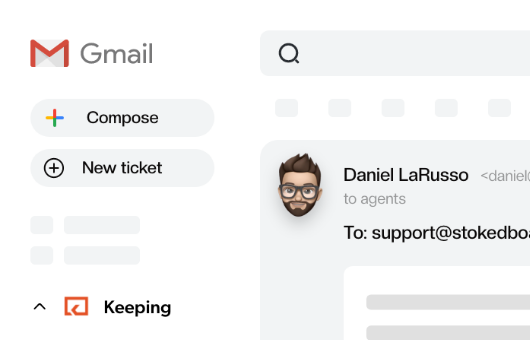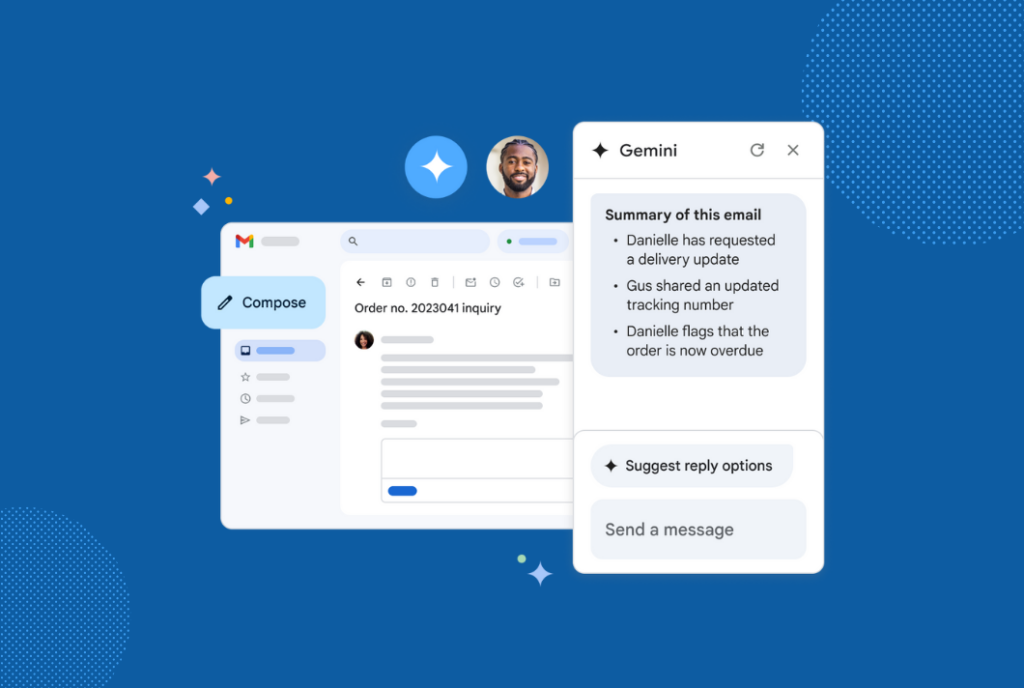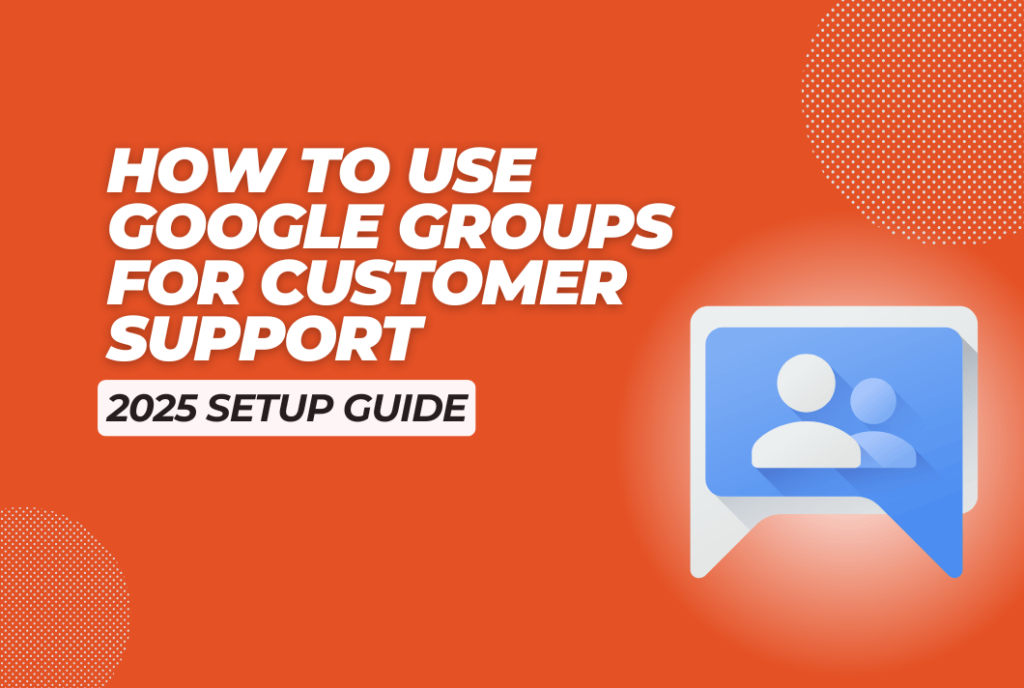
How to Set Up an Internal Helpdesk
An internal helpdesk can be a valuable asset for your brand, providing employees with the support and resources they need to perform their jobs effectively and efficiently.
Are you tired of customers complaining about slow resolutions, inaccurate resolutions, or dumb customer service agents? Do you wish there was a magical solution to all your problems? We can’t promise magic, but we can introduce you to the next best thing – an internal helpdesk!
An internal helpdesk is a support system that can help your employees tackle any problem, big or small. From forgotten passwords to malfunctioning equipment, the internal help desk software has got your back. And the best part? Your employees save time, and it boosts their productivity. But what exactly is an internal helpdesk? How does it work? And what are the benefits of having one in your workplace? Don’t worry; we’ve got you covered!
In this guide, we’ll take you through everything you need to know about internal help desk software. We’ll cover the essential components, best practices, and types of internal help desks to choose from. So, buckle up and get ready to become a help desk pro!
What is an internal helpdesk?
An internal helpdesk is another version of an external help desk that is supposed to provide assistance and technical support to a company’s internal stakeholders. Internal help desks may also be called IT help desks.
The main purpose of an internal help desk software is to ensure that all employees have the necessary resources and tools to do their jobs efficiently.
An internal helpdesk software typically helps with the following:
- Resolving IT-related issues.
- Addressing hardware and software problems.
- Troubleshooting network connectivity.
- Providing guidance on software applications and tools.
- Assisting with account setup and password management.
The goal is to ensure that all employees receive timely and effective support and that their issues are resolved as quickly as possible.
In a nutshell: An internal helpdesk is a vital component of an organization’s IT infrastructure, ensuring that employees can work productively without interruptions caused by technical issues.
Internal ticketing: The core of internal help desk software
Internal ticketing is a process organizations use to track, manage, and resolve internal issues or requests raised by employees within the company. It involves using a ticketing system, which allows employees to submit requests or report issues to the appropriate department or team for resolution.
Read More: Use Workload Management to Optimize Your Team
An internal ticketing system typically has a centralized dashboard that allows support teams to track and manage all requests, prioritize them based on urgency and severity, and assign them to the relevant team or individual for resolution.
An internal support ticketing system also provide visibility into the status of each request, enabling service desk personnel to provide regular updates to employees on the progress of their requests.
An internal ticketing system can be used for various purposes, such as IT support requests, HR inquiries, facilities management requests, and finance-related requests.
By using an internal ticketing system, organizations can streamline their internal support processes, improve communication between departments, and provide a better overall employee experience.
What is the difference between an internal and external help desk?
Before you learn more about internal help desk software, let’s first understand the difference between an internal and an external help desk.
Users
The primary difference between an internal and external help desk is the users they support. An internal help desk supports employees within an organization, while an external help desk supports customers or clients outside the organization.
Access
An internal helpdesk is only accessible to employees within the organization, while an external help desk is accessible to anyone who has purchased the company’s products or services. Sometimes, even people who have not made a purchase.
Expertise
An internal helpdesk is typically staffed by employees who deeply understand the organization’s technology, processes, and culture. In contrast, an external help desk is staffed by experts who are knowledgeable about the company’s products and services but may not have the same level of familiarity with the organization’s internal workings.
Support scope
An internal help desk software is usually responsible for supporting a wide range of issues, from technology to human resources to finance. In contrast, an external help desk typically provides support only for issues related to the company’s products or services.
How does having an internal helpdesk benefit your brand?
Here are all the benefits you’ll get out of an internal help desk software:
Centralized support
An internal help desk system becomes the single point of contact for all employee inquiries and issues. This means that your employees know exactly where to go to get help. They do not have to navigate to different departments to get help. This helps to ensure that all requests are handled consistently and efficiently and that employees have a clear path to follow when they need help.
Increased productivity
Since your employees are no more running to different departments to get help, they can be more efficient. With the help of an internal helpdesk software employees can focus on their core tasks and responsibilities rather than spend time troubleshooting problems on their own. This will lead to increased productivity and efficiency across the organization.
Better tracking and reporting
An internal help desk system typically uses software to track and manage all employee inquiries and issues. This helps to ensure that all requests are properly documented and that data is available for analysis and reporting. This can help the organization identify trends and areas for improvement and make data-driven decisions.
Cost savings
By having a dedicated internal helpdesk, the organization can save money on outsourcing support services or hiring additional to handle support requests. An internal helpdesk software can also help prevent downtime and minimize the impact of IT-related issues, resulting in cost savings for the organization.
Improved customer service
With an internal help desk, employees get the right direction at the right time. This brings faster resolution, accurate answers, and efficient solutions, which improve the overall service of your brand. Internal help desks also bring consistent service to the organization, which is essential in improving customer service. When all benefits of internal help come together, it improves customer service.
What are the different types of internal help desks?
Here are the different types of internal desks, so you can choose the one that’s best for you.
On-premise Internal Help Desk
An on-premise internal help desk is hosted on the company’s servers, which are physically located on the premises. These systems offer more control and customization options for internal support but require significant IT resources to maintain.
If your company is at a scale where it can afford such maintenance, then there’s no better option than an on-premise internal ! Examples of companies that use on-premise internal help desk systems include Microsoft and IBM.
Cloud-Based Internal Help Desk
A cloud-based internal help desk is hosted on remote servers and accessed through the internet. They are also cost-effective since organizations do not need to invest in hardware or software infrastructure to support the system.
Cloud-based help desks can integrate with other cloud-based tools, such as project management software, chat applications, and customer relationship management (CRM) systems, making them an essential component of modern IT support.
These systems are easy to set up and require minimal IT resources, but offer less control and customization options. Examples of companies that use cloud-based internal help desk systems for internal operations include Salesforce and Zendesk.
Hybrid Internal Help Desk
A hybrid internal helpdesk is a combination of on-premise and cloud-based systems. It means some components may be hosted on-premise while others are hosted in the cloud.
The hybrid internal and help desk software is designed to offer the advantages of both cloud-based and on-premise help desk systems. For instance, the cloud-based aspect of the system provides the flexibility and scalability of cloud-based systems, while the on-premise component offers greater control over data security and customization options.
These systems offer the benefits of both hosting types but may require more complex management. Examples of companies that use hybrid internal help desk systems include Atlassian and Freshworks.
Open-Source Internal Help Desk
An open-source internal help desk is a software system that is freely available and can be modified by the user. These systems offer complete control and customization options but require significant technical expertise to set up and maintain.
If you are considering an open-source internal help, you must hire technical experts who can operate and manage it. Companies like Mozilla and Red Hat use open-source internal help desk systems.
Essential components of an internal help desk
You know what types of internal help desks are available in the market; now look at the essential components of an internal helpdesk. Here are the essentials components of an internal help desk that your help desk must contain:
- Ticketing system: A ticketing system is the core of any help desk. It allows users to submit support requests and provides help desk agents with a way to track and manage those requests.
- Knowledge base: A knowledge base is a collection of articles, documents, and other resources that solve common problems or frequently asked questions. This allows the support team to quickly find answers to their questions without contacting the help desk.
- Service level agreements (SLAs) define the expected response times and resolution times for different requests. They help ensure that users receive timely and satisfactory assistance.
- Reporting and analytics: The ability to track and analyze help desk performance can provide insight into the effectiveness of the help desk and identify areas for improvement for internal operations.
- Monitoring and reporting tools: Monitoring tools are used to track the performance of the support team, identify bottlenecks, and improve the support process. Reporting tools provide insights into the volume of support requests, the resolution time, and the overall performance of the help desk.
What are the responsibilities of an ITIL service desk?
Internal help desks and an IT service desk serve similar purposes. The responsibilities of an ITIL service desk include the following:
- Incident Management: The ITIL service desk identifies the incident through various channels such as phone, email, web portal, monitoring tools, or other sources. It also records and tracks all incidents reported to the service desk, identifies their impact and urgency, and takes appropriate actions to resolve them.
- Problem Management: Identifying the root causes of incidents and working to resolve them through known error databases, known solutions, or escalation to problem management.
- Change Management: Processing requests for IT infrastructure or service changes, assessing the impact and risk of those changes, and coordinating the change process with other teams to ensure minimal disruption.
- Service Level Management: Monitoring and reporting on service level agreements (SLAs) and service level objectives (SLOs) and taking action to improve service levels where necessary.
- Request Fulfillment: Processing requests for information or access to IT services, providing information and guidance to users, and coordinating the resolution of requests with other teams.
- Incident Communication: Providing timely communication to stakeholders about the status of incidents and service changes, including updates on service disruptions and outages.
- Knowledge Management: Capturing and sharing knowledge and best practices within the service desk and across the organization to improve the efficiency and effectiveness of IT services.
Overall, the ITIL service desk is responsible for ensuring that IT services are delivered efficiently, effectively, and in accordance with agreed-upon service levels. The service desk serves as the single point of contact between the IT team and users, providing a central location for users to report incidents and request IT services.
Internal help desk best practices
An internal helpdesk can be a valuable asset for your brand, providing employees with the support and resources they need to perform their jobs effectively and efficiently. But all these benefits of an internal helpdesk can only be availed if you follow the best practices.
Here are the best practices to follow when using an internal helpdesk:
Have a clear process in place
To best use an internal helpdesk, you should establish clear processes on how and what type of requests will be submitted. Each action and its consequence must be clearly defined under your processes to ensure the smooth use of the internal help desk features.
Having a clear process in place will:
- Improve efficiency: A clear process can ensure that requests are handled promptly and efficiently, reducing downtime and improving productivity.
- Improve communication: With a clear process, there is less confusion and miscommunication between users and the support team, leading to better collaboration and understanding.
- Increase user satisfaction: Your employees will efficiently use the help desk and, as a result, will deliver great customer service.
- Improve accountability: With a clear process, tracking and monitoring requests is easier, ensuring that nothing falls through the cracks and that all requests are handled appropriately.
You can start by preparing a playbook or a set of guidelines. Once it is ready, you make it a part of the employee onboarding kit and circulate it to the existing employees. This way, everyone in the organization would know the processes to be followed.
Use it to collect employee feedback.
Your employees talk directly to your customers. They have the information you do not have, which can be conveyed through their feedback. An internal helpdesk can be a great source for collecting employee feedback.This feedback can identify areas for improvement and ensure that the help desk team is providing effective support to employees. Organizations can improve the overall employee experience by addressing employee issues and boosting employee satisfaction and productivity.
Start small by promoting feedback systems and setting up feedback channels. By setting up feedback channels, you also make it easier for employees to submit feedback.
Ensure you assign feedback requests to appropriate support teams and take action based on the feedback. If not, taking feedback would be in vain.
Measure and improve employee performance
Your employees are a huge determinant of the success of your organization. And internal help desks act as a great source to measure and improve employee performance.
By tracking the number and type of support requests submitted by employees, organizations can gain insights into areas where employees may need additional training or support.
For example, if many support requests are related to a specific software application, it may indicate that employees need additional training on how to use the software.
By addressing this issue through training or providing more detailed documentation, organizations can improve employee performance and reduce the number of software-related support tickets and requests.
Ask your employees to go into the details.
Detailed information is crucial when submitting a support request to the internal helpdesk. Employees can help the help desk team identify the problem and provide an accurate solution by providing specific details.
One way to encourage employees to provide detailed information is to guide what to include in the support request form.
This can include prompts for specific information, such as the type of device or software being used, the specific steps taken before the issue occurred, and any error messages or warnings received.
Encouraging employees to provide screenshots or videos of the issue can also be helpful, as it provides visual context for the problem. This can be done by providing instructions on taking screenshots or videos and including a file attachment option in the support request form.
Set up a knowledge base
Yep, your employees benefit from a more internal knowledge base, too! By setting up a knowledge base on an internal help desk, organizations can provide better employee support, improve efficiency, and foster a culture of employee empowerment.
A knowledge base can help employees find answers to common issues without submitting a support request. This can reduce the workload of the help desk team and allow them to focus on more complex issues.
Another reason is to provide consistent support. It can alsoensure that employees receive consistent and accurate information on resolving issues. Additionally, a knowledge base can empower employees to solve problems independently, reducing the need for assistance from the help desk team.
To set up a knowledge base on an internal help desk, consider the following tips:
- Organize information effectively- Group related articles together and use clear and concise titles
- Include visuals- Visual aids such as screenshots or videos can help explain complex issues.
- Keep it up-to-date- Regularly review and update the knowledge base to ensure that it reflects the current state of the organization’s technology and processes.
Choose the right internal help desk
Our last tip for you is to choose the right internal help desk for your organizational needs. If you choose a help desk that is too complex for your employees or one that requires heavy maintenance which you cannot afford—it’s a waste of resources. This is because, with the wrong internal ticketing system, you cannot get the right results.
If you are a brand that uses email as its primary mode of communication, then Keeping is the perfect help desk for your team!
Keeping transforms the good-old Gmail into a fully-featured help desk to help you solve issues correctly and on time. Keeping comes with multiple features like agent allocation, collision detection, Shopify and Zapier integration, and workflow automation. You get all features needed to deliver excellent internal support.
Join 150+ teams that are sharing inboxes with us
The easiest way to upgrade your shared Gmail account. There’s no credit card is required.





